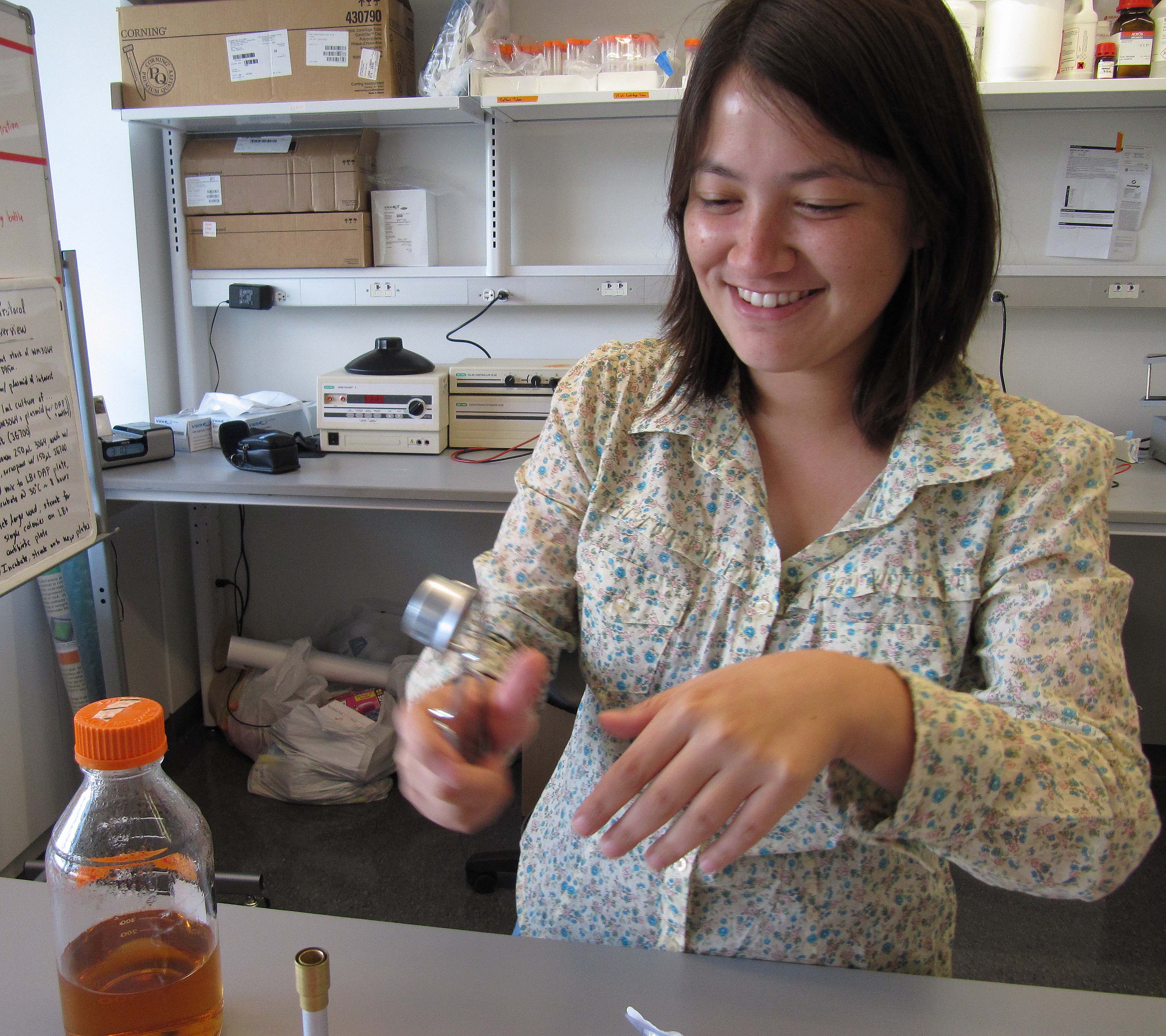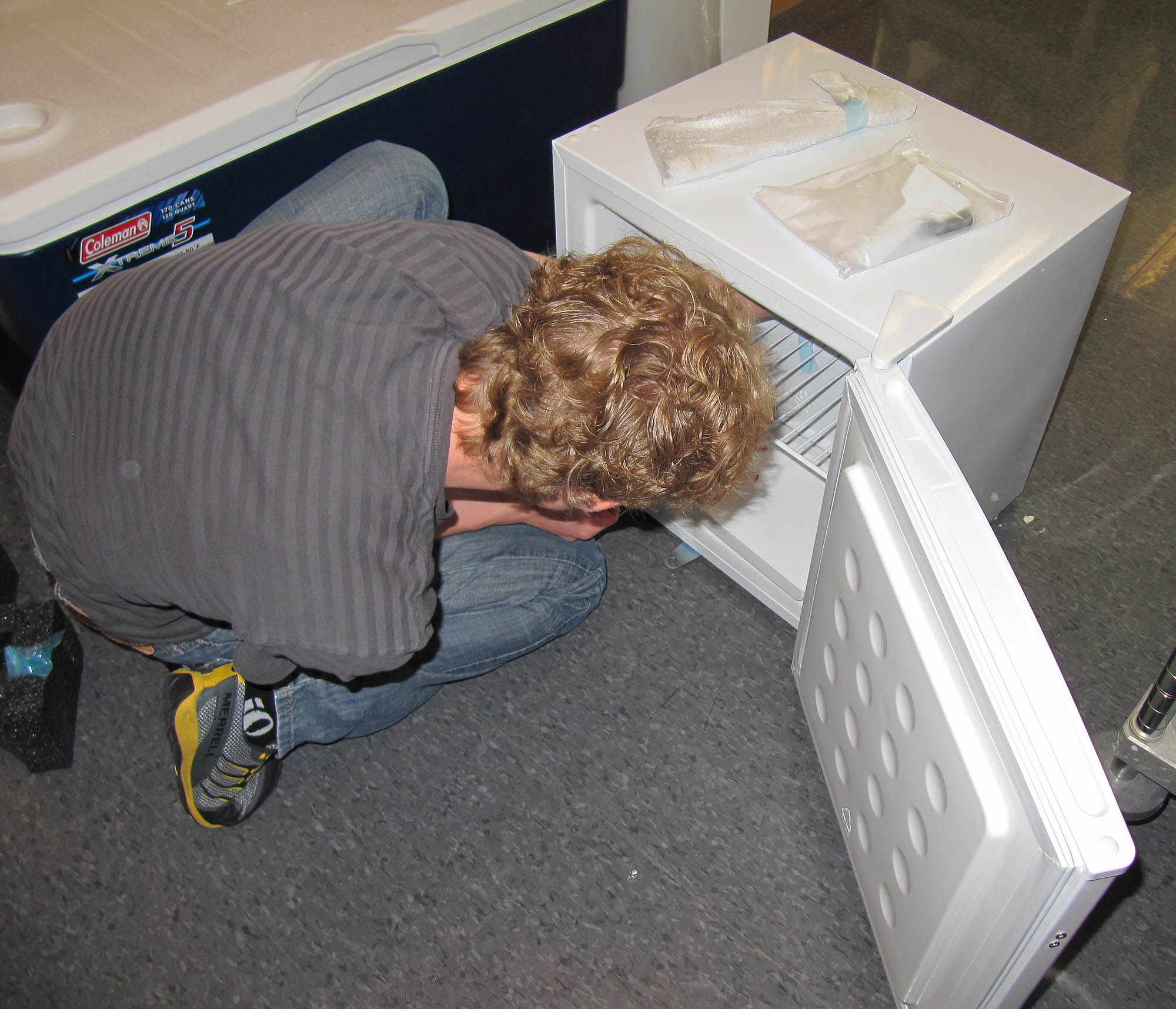Team:Cornell/Notebook/Salicylate reporter/July8
From 2012.igem.org
(→July 8th-14th) |
(→July 10th: added picture of new freezer) |
||
| Line 16: | Line 16: | ||
==July 10th== | ==July 10th== | ||
Caleb [[Team:Cornell/Notebook/Miniprep|miniprepped]] strains containing plasmids p8, p9, p10, p15, and p16 (See our [[Team:Cornell/Notebook/StrainList|strain list]]) Also, our new freezer arrived. We cleaned and welcomed our new friend. The WM3064 came in and we plated from the agar stab. Dylan set up two 18 mL/hr continuous flow reactors using 10x diluted LB and innoculated one of the reactors with JG700 and one with wild type Shewanella oneidensis MR-1. | Caleb [[Team:Cornell/Notebook/Miniprep|miniprepped]] strains containing plasmids p8, p9, p10, p15, and p16 (See our [[Team:Cornell/Notebook/StrainList|strain list]]) Also, our new freezer arrived. We cleaned and welcomed our new friend. The WM3064 came in and we plated from the agar stab. Dylan set up two 18 mL/hr continuous flow reactors using 10x diluted LB and innoculated one of the reactors with JG700 and one with wild type Shewanella oneidensis MR-1. | ||
| + | [[Image:2012_7_10_DylanNewFridge.jpg|thumb|right|Dylan setting up our new freezer!]] | ||
==July 11th== | ==July 11th== | ||
Revision as of 18:03, 12 July 2012
| Home | Team | Project | Parts | Modeling | Notebook | Protocols | Safety | Attributions |
|---|
|
The salicylate reporter is analogous to the arsenic reporter, but with a salicylate-sensitive promoter. That is, in the presence of salicylate it will produce MtrB, completing the Mtr pathway and allowing Shewanella to produce current in our biosensor. In combination with the nah operon, this reporter will be able to detect naphthalene levels. Back to salicylate reporter week view
July 8th-14th
July 8th
July 9th
Dylan performed a Phusion PCR with a single annealing temperature of 59 degrees Celsius using primers 27 and 28 for the final time. In the future, new primers will be used. The purpose of this PCR was to amplify p21. The PCR product was analyzed using agarose gel electrophoresis to determine if the desired 1.127 kb fragment is present. To transform our plasmids into Shewanella with conjugation, we had asked Dr. Jeff Gralnick for WM3064 E. coli for which plates containing 2,6-Diaminopimelic Acid (DAP) are required. In preparation to receive this strain, the plates with DAP were prepared.
July 10th
Caleb miniprepped strains containing plasmids p8, p9, p10, p15, and p16 (See our strain list) Also, our new freezer arrived. We cleaned and welcomed our new friend. The WM3064 came in and we plated from the agar stab. Dylan set up two 18 mL/hr continuous flow reactors using 10x diluted LB and innoculated one of the reactors with JG700 and one with wild type Shewanella oneidensis MR-1.
July 11th
July 12th
July 13th
==July 14th==
 "
"

